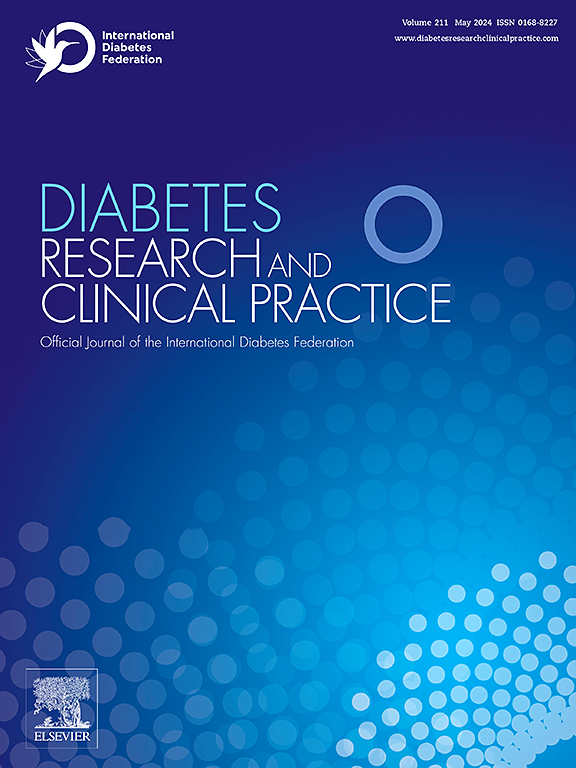Real world effectiveness of oral semaglutide: Focus on patients with type 2 diabetes older than 75 years
IF 6.1
3区 医学
Q1 ENDOCRINOLOGY & METABOLISM
引用次数: 0
Abstract
Aim
Data on the efficacy of oral semaglutide (OS) in elderly patients with type 2 diabetes are still lacking. This study evaluates the effectiveness of OS in a real world setting with a large ≥75 year old population.
Methods
This study includes all type 2 diabetic patients who started OS between October 2021 and December 2023 in seven diabetes centers. Data were collected at baseline, 6 (T6) and 12 (T12) months. Effectiveness measures were assessed on the total sample and by patient age (<65, 65–75, >75 years).
Results
Overall 1824 patients started OS, of those 18.7 % were over 75 years (>75 yr). OS resulted in a significant reduction in rate of patients using sulphonylureas, rapid and basal insulin therapy, HbA1c reduced by 0.87 % at T6 and at T12 (both p < 0.0001), body weight by 2.78 Kg (p < 0.0001) at T6 and 3.89 Kg (p < 0.0001) at T12. Similarly, >75 yr showed HbA1c reduction at T6 (p < 0.0001) and T12 (p = 0.0003), body weight significantly reduced (p for interaction 0.005) both at T6 (−1.57 Kg; p = 0.0003) and T12 (−2.74 Kg; p < 0.0001).
Conclusion
In our study, OS results efficacy in non-elderly and elderly patients, making it an effective treatment option also for very elderly type 2 diabetic patients.
口服塞马鲁肽的实际效果:关注 75 岁以上的 2 型糖尿病患者。
目的:目前仍缺乏有关口服塞马鲁肽(OS)对老年 2 型糖尿病患者疗效的数据。本研究评估了 OS 在≥75 岁老年人群中的实际疗效:本研究包括七个糖尿病中心在 2021 年 10 月至 2023 年 12 月期间开始 OS 的所有 2 型糖尿病患者。在基线、6 个月(T6)和 12 个月(T12)收集数据。对全部样本和患者年龄(75 岁)进行疗效评估:结果:共有 1824 名患者开始接受 OS 治疗,其中 18.7% 的患者年龄超过 75 岁(75 岁以上)。OS 显著降低了患者使用磺脲类药物、快速胰岛素和基础胰岛素治疗的比例,HbA1c 在 T6 和 T12 阶段降低了 0.87%(均为 p 75 岁患者在 T6 阶段的 HbA1c 有所降低(p 结论:我们的研究结果表明,OS 对 75 岁以上患者的疗效显著:在我们的研究中,OS 在非老年患者和老年患者中都取得了疗效,因此对于非常年长的 2 型糖尿病患者来说,OS 也是一种有效的治疗方法。
本文章由计算机程序翻译,如有差异,请以英文原文为准。
求助全文
约1分钟内获得全文
求助全文
来源期刊

Diabetes research and clinical practice
医学-内分泌学与代谢
CiteScore
10.30
自引率
3.90%
发文量
862
审稿时长
32 days
期刊介绍:
Diabetes Research and Clinical Practice is an international journal for health-care providers and clinically oriented researchers that publishes high-quality original research articles and expert reviews in diabetes and related areas. The role of the journal is to provide a venue for dissemination of knowledge and discussion of topics related to diabetes clinical research and patient care. Topics of focus include translational science, genetics, immunology, nutrition, psychosocial research, epidemiology, prevention, socio-economic research, complications, new treatments, technologies and therapy.
 求助内容:
求助内容: 应助结果提醒方式:
应助结果提醒方式:


